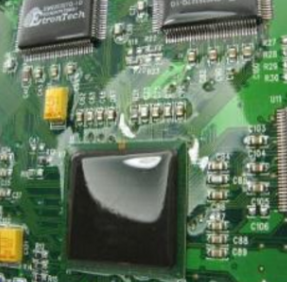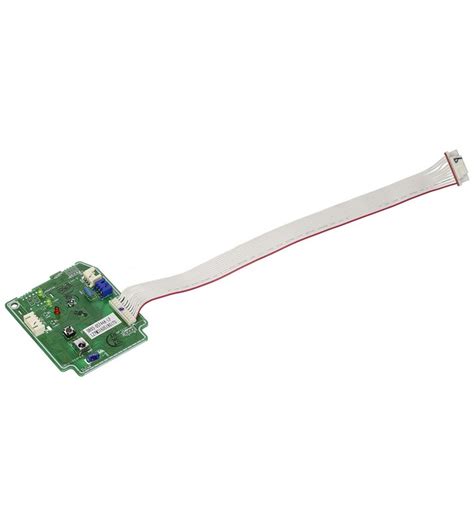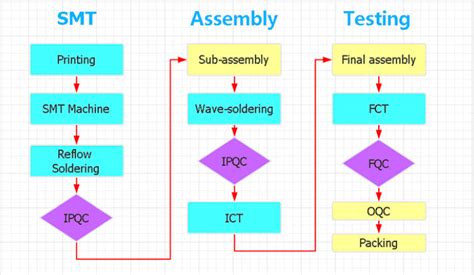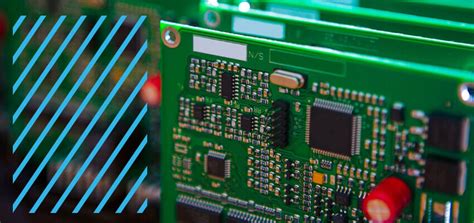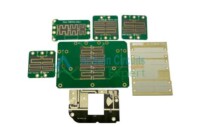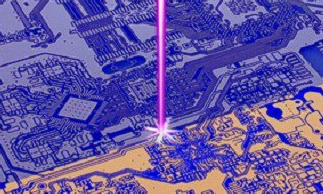Thermal design of security surveillance cameras
In the field of security surveillance, the stable operation of cameras is crucial to ensuring safety. Thermal design is the key link to ensure that cameras can work stably for a long time. The camera will generate a certain amount of heat when working. If the heat cannot be effectively dissipated, the temperature of the camera will rise, which will affect its performance and stability, and may even cause failures. Therefore, the main goal of thermal design is to ensure that the camera can maintain an appropriate temperature when working.
From the perspective of heat source, components such as chips, image sensors, and fill lights inside the camera will generate heat during operation.
With the continuous development of security technology, the functions of cameras are becoming more and more powerful, the image resolution is constantly improving, and the amount of data processing is increasing, which makes the power consumption of components such as chips also increase, and the heat generation is further increased. For example, when high-definition or even ultra-high-definition cameras process a large amount of image data in real time, the chip needs to run at high speed, which generates a lot of heat.
In terms of thermal environment, the installation scenarios of security surveillance cameras are complex and diverse.
Some cameras are installed indoors, and the environment is relatively stable, but some cameras need to be installed outdoors, such as roads, squares, factories and other places. The outdoor environment is harsh, with a wide range of temperature changes, high temperatures in the summer and low temperatures in the winter. At the same time, it may also face wind, rain, dust and other attacks. These factors have put forward higher requirements for the heat dissipation design of the camera.
In the field of heat dissipation design, Hefei Aoqi Electronics has provided efficient heat dissipation solutions for many security surveillance cameras with its excellent thermal conductive silicone sheets and graphite sheets. Next, we will demonstrate the application of these innovative heat dissipation technologies through two successful cases.

Case 1: Indoor large shopping mall surveillance camera
Although the indoor large shopping mall environment is relatively stable, the number of cameras is large and widely distributed. Therefore, heat dissipation design and cost control need to be taken into account.
Heat dissipation design highlights:
Graphite sheet heat dissipation design: Hefei Aoqi Electronics’ high-quality graphite sheets are used and attached to the camera motherboard over a large area. With its excellent thermal conductivity, the heat generated by each heat-generating chip is quickly and evenly dispersed, effectively avoiding the formation of local hot spots. This design significantly reduces the overall temperature of the motherboard and improves the stability of the system. When the mall is crowded and the amount of monitoring data processing surges, the temperature difference between the chips on the motherboard is significantly reduced, ensuring the smoothness of image acquisition and transmission.
· Natural convection optimization: Through the carefully designed camera shell structure, an efficient natural convection channel is formed. Hidden ventilation slots are cleverly set on the shell, which not only maintains the beauty but also ensures the natural flow of air inside the camera. Under normal room temperature in the mall, natural convection alone can meet the heat dissipation requirements, without the need for additional heat dissipation equipment, reducing energy consumption and costs.
· Temperature monitoring and software control: The camera has a built-in temperature monitoring module to monitor the internal temperature in real time. When the temperature approaches the critical value, the software system automatically adjusts the camera working parameters, such as reducing the image resolution or frame rate, to reduce the amount of data processing, thereby reducing the heat generation. At the same time, the abnormal temperature information is sent to the monitoring center to remind the operation and maintenance personnel to check and maintain in time. This combination of software and hardware heat dissipation method effectively extends the service life of the camera while ensuring the monitoring effect.

Case 2: Industrial plant surveillance camera
The industrial plant environment is complex, with problems such as high temperature, high dust, and strong electromagnetic interference, which pose a severe test to the heat dissipation and protection performance of the camera.
Highlights of heat dissipation design:
·Fully sealed heat dissipation structure and thermal conductive silicone filling: The camera adopts a fully sealed design, and the shell is made of high-strength metal material with excellent electromagnetic shielding performance. In order to solve the heat dissipation problem in a sealed environment, Hefei Aoqi Electronics’ thermal conductive silicone is used between the internal heating components and the shell of the camera. Its high thermal conductivity can effectively fill tiny gaps and quickly transfer heat to the shell for heat dissipation.
At the same time, thermal conductive silicone also has shock absorption and insulation functions to protect internal electronic components from vibration and short circuit risks. In a high dust environment, this fully sealed heat dissipation structure effectively prevents dust from entering and avoids heat dissipation problems caused by dust accumulation.
Phase change energy storage material assisted heat dissipation: In response to the short-term high temperature peaks that may occur in industrial plants, phase change energy storage materials are installed inside the camera. When the ambient temperature rises suddenly or the camera’s own heat generation surges in a short period of time, the phase change energy storage material can absorb and store excess heat to maintain the relative stability of the camera’s internal temperature. For example, when a factory equipment failure causes a local temperature rise, the phase change energy storage material absorbs heat to prevent the camera from being damaged by instantaneous overheating, providing additional temperature buffer protection for the equipment.
Combined heat dissipation of heat sink fins and heat pipes (external heat dissipation enhancement): Large heat sink fins are designed on the surface of the camera housing, and the internal heat is transferred to the heat sink fins through heat pipes. The heat sink fins are treated with special processes to improve their corrosion resistance and oxidation resistance in harsh environments. In the high temperature environment of industrial plants, this combined heat dissipation method can quickly dissipate the internal heat of the camera, ensuring that the camera works stably under high temperature and strong electromagnetic interference, meeting the monitoring needs of industrial production processes.
Through the above cases, we can see that the heat dissipation problem of security surveillance cameras can be optimized and designed from the following aspects:
Natural heat dissipation optimization
· Enhanced radiation heat exchange: The surface treatment method with high emissivity in the infrared band is used to improve the radiation heat exchange capacity between the camera housing and the external environment. For example, special heat dissipation paint or coating is used to increase the infrared emissivity of the shell surface, so that heat can be dissipated more effectively through radiation.
· Optimize structural design: Rationally design the internal structure of the camera to ensure smooth air circulation. For small cameras, a natural convection channel can be formed by optimizing the shell shape and internal component layout. For example, ventilation slots or heat dissipation fins are designed on the shell to increase the air contact area and promote natural convection heat exchange.
Application of heat dissipation materials
· Graphite sheets and copper foil: The high thermal conductivity of Hefei Aoqi Electronics’ graphite sheets and copper foils can be used to quickly and evenly disperse the heat from the heat source. The graphite sheet is attached to the motherboard, which can quickly transfer the heat from hot spots such as chips to the entire motherboard to avoid local overheating. Copper foil is used to connect the heat-generating components to the heat dissipation structure to improve the heat conduction efficiency.
· Heat pipe and VC (heat sink): For high-end cameras with large heat generation, heat pipe or VC technology can be used. The working fluid inside the heat pipe achieves efficient heat transfer during the heated evaporation and condensation process, and quickly transfers heat from the heat source to the heat dissipation end. VC has a larger heat dissipation area and higher heat dissipation performance, which can better cope with high-power heating.
· Thermally conductive silicone sheet and thermally conductive silicone grease: Hefei Aoqi Electronics’ thermally conductive silicone sheet and thermally conductive silicone grease are widely used in the heat dissipation design of security surveillance cameras due to their excellent thermal conductivity and stability, effectively improving the heat dissipation effect.
Heat dissipation structure design
· Heat dissipation shell design: The camera shell is made of metal materials (such as aluminum alloy), and the high thermal conductivity of the metal is used to transfer the internal heat to the shell surface, and then dissipate the heat to the surrounding environment through natural convection or radiation. At the same time, optimize the shell heat dissipation structure, such as increasing the number, height and spacing of heat dissipation fins to improve heat dissipation efficiency.
· Fan heat dissipation (applicable to some scenarios): When the heat dissipation requirements are high and the environment permits, consider using fans for forced convection heat dissipation. For example, in the centralized surveillance camera in a large surveillance room, the fan can accelerate the air flow and take away the heat. However, attention should be paid to the fan’s noise, power consumption, reliability, and waterproof and dustproof performance to ensure its stable operation in complex environments.
Circuit board design coordination
· Reasonable chip layout: When designing the circuit board, disperse the chips with high heat generation to avoid heat concentration. At the same time, consider the relative position of the chip and the heat dissipation structure, shorten the heat conduction path, and improve the heat dissipation efficiency.
· Thermal via design: Increase the number and size of thermal vias on the circuit board so that heat can be quickly transferred between different layers to improve the overall heat dissipation performance.
Cooperative heat dissipation of software and hardware
· Hardware frequency reduction strategy: Through hardware design, the chip operating frequency is automatically reduced when the camera temperature is too high, the heat generation is reduced, and the camera components are protected from overheating damage. However, it is necessary to find a balance between performance and temperature to avoid excessive frequency reduction affecting the monitoring effect.
· Software temperature monitoring and intelligent control: Integrate temperature monitoring function in the camera software system to monitor the temperature of key components in real time. When the temperature reaches the set threshold, the software takes corresponding control measures, such as adjusting image acquisition parameters, reducing the brightness of the fill light, etc., to reduce heat generation. At the same time, send temperature alarm information to the monitoring center to remind the operation and maintenance personnel to deal with it in time.

Environmental adaptability design
· Waterproof and dustproof design and heat dissipation trade-off: Given that security surveillance cameras are mostly installed in harsh outdoor environments, waterproof and dustproof design is crucial. When designing a heat dissipation solution, it is necessary to ensure that the heat dissipation structure is coordinated with the waterproof and dustproof design. For example, high-quality sealing rubber rings are used at the seal of the shell, and reasonable waterproof and dustproof structures are designed at the heat dissipation holes and other parts to prevent moisture and dust from entering the camera and affecting heat dissipation and normal operation.
· High and low temperature resistant design: Select heat dissipation materials and components that can adapt to high and low temperature environments to ensure that the camera can still dissipate heat normally under extreme temperature conditions. For example, the motor of the cooling fan needs to be able to start normally at low temperatures, and the heat dissipation material must be stable and not fail at high temperatures.
Reliability and maintainability considerations
· Heat dissipation system reliability design: Reliability design of the heat dissipation system, including life testing and thermal stability testing of heat dissipation components. Ensure that the heat dissipation system operates stably and reliably during the service life of the camera, and reduce failures and maintenance costs caused by heat dissipation problems.
· Easy-to-maintain heat dissipation structure: Design an easy-to-maintain heat dissipation structure to facilitate quick maintenance and replacement of heat dissipation components when the camera has heat dissipation problems. For example, the cooling fan adopts a modular design, which is easy to disassemble and replace.
In summary, the heat dissipation design of security surveillance cameras is a comprehensive project, which requires thermal design engineers to comprehensively consider the functional requirements, installation environment and cost of the camera, and cleverly use various heat dissipation technologies and means, combined with efficient heat dissipation materials such as thermal conductive silicone sheets and graphite sheets, to create efficient, reliable and adaptable heat dissipation solutions for different environments, ensure the stable operation of the camera, and provide solid protection for security monitoring work.
Hefei Aoqi Electronic Technology Co., Ltd.:
The main products include: thermal conductive silicone sheets, thermal conductive silicone grease, synthetic graphite paper, natural graphite sheets, thermal conductive mud, thermal conductive double-sided adhesive, silicone thermal conductive potting glue, PC/PET insulating Mylar sheets, metal heat dissipation materials, silicone rubber products, high temperature resistant materials, nanomaterials, shielding materials, insulating flame retardant materials, carbon fiber liquid cooling systems, thermal management systems, cooling and heat dissipation parts and other materials.

